-
 Bitcoin
Bitcoin $119300
2.40% -
 Ethereum
Ethereum $4254
-0.20% -
 XRP
XRP $3.184
-1.38% -
 Tether USDt
Tether USDt $1.000
0.00% -
 BNB
BNB $803.9
0.58% -
 Solana
Solana $183.1
1.50% -
 USDC
USDC $0.0000
0.01% -
 Dogecoin
Dogecoin $0.2339
-2.87% -
 TRON
TRON $0.3384
0.88% -
 Cardano
Cardano $0.8018
-0.29% -
 Hyperliquid
Hyperliquid $45.13
3.14% -
 Chainlink
Chainlink $22.10
0.96% -
 Stellar
Stellar $0.4439
-0.94% -
 Sui
Sui $3.875
-0.73% -
 Bitcoin Cash
Bitcoin Cash $570.7
0.24% -
 Hedera
Hedera $0.2589
-2.90% -
 Ethena USDe
Ethena USDe $1.001
-0.01% -
 Avalanche
Avalanche $23.83
-1.73% -
 Litecoin
Litecoin $123.8
2.61% -
 Toncoin
Toncoin $3.351
-1.13% -
 UNUS SED LEO
UNUS SED LEO $9.103
1.13% -
 Shiba Inu
Shiba Inu $0.00001356
-1.40% -
 Uniswap
Uniswap $10.93
-0.19% -
 Polkadot
Polkadot $4.057
-1.97% -
 Dai
Dai $1.000
0.01% -
 Cronos
Cronos $0.1646
4.66% -
 Ethena
Ethena $0.7974
8.11% -
 Pepe
Pepe $0.00001208
-2.89% -
 Bitget Token
Bitget Token $4.445
-1.70% -
 Monero
Monero $268.8
-2.00%
Can NFTs be fractionalized?
NFT fractionalization splits high-value digital assets into smaller, tradable tokens, enabling shared ownership and broader access via blockchain.
Aug 11, 2025 at 12:07 am
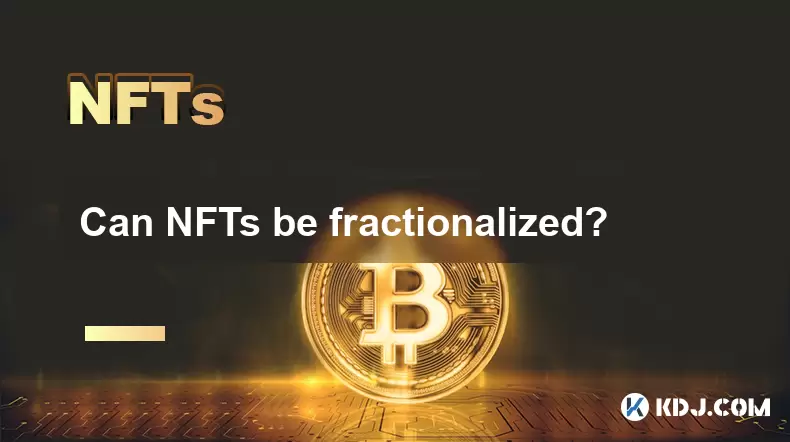
Understanding NFT Fractionalization
NFT fractionalization refers to the process of dividing a single non-fungible token into multiple smaller, fungible tokens. Each of these smaller tokens represents a partial ownership stake in the original NFT. This concept allows high-value digital assets—such as rare digital art, collectibles, or virtual real estate—to be shared among multiple investors. By breaking down ownership, fractionalization lowers the entry barrier, enabling more people to participate in owning a piece of a premium NFT. The underlying technology enabling this is typically built on smart contracts, most commonly on the Ethereum blockchain using standards like ERC-721 for the NFT and ERC-20 for the fractional tokens.
How NFT Fractionalization Works Technically
The process of fractionalizing an NFT involves several precise blockchain operations. A smart contract is deployed to manage the division and distribution of ownership shares. Below are the key steps:
- The original NFT owner transfers the NFT to a dedicated smart contract designed for fractionalization.
- The contract then mints a specified number of fungible ERC-20 tokens, each representing a fraction of ownership.
- These newly created tokens are distributed to investors or listed on decentralized exchanges.
- Ownership rules, voting rights (if applicable), and redemption mechanisms are encoded directly into the contract.
- The original NFT remains locked in the contract until certain conditions are met, such as a buyout or redistribution.
Platforms like Fractional.art and NFTX provide user-friendly interfaces to carry out this process. For instance, on Fractional.art, a user can connect their wallet, select an NFT from their collection, define the number of shares (e.g., 1,000), set a name and symbol for the new token (e.g., “ART” for a digital artwork), and finalize the split. Once completed, the system generates 1,000 ERC-20 tokens, each representing 0.1% ownership of the NFT.
Use Cases for Fractional NFT Ownership
Fractionalization unlocks several practical applications within the digital asset economy. One prominent use case is in high-value art ownership. A digital artwork worth 100 ETH might be out of reach for most collectors. By splitting it into 10,000 shares at 0.01 ETH each, a broader audience can invest. This democratizes access and introduces liquidity to otherwise illiquid assets.
Another application is in virtual real estate within metaverse platforms. A prime plot in Decentraland could be co-owned by dozens of investors who collectively decide on development or leasing through governance mechanisms tied to their token holdings. Similarly, rare collectibles like CryptoPunks or Bored Ape Yacht Club (BAYC) NFTs have been fractionalized, allowing fans and investors to gain exposure without purchasing the full asset.
Some projects also use fractional NFTs for community treasury management. DAOs (Decentralized Autonomous Organizations) can own an NFT as a community asset, with governance rights distributed proportionally based on token ownership. This enables decentralized decision-making on matters like selling, lending, or displaying the NFT.
Platforms Enabling NFT Fractionalization
Several blockchain platforms specialize in NFT fractionalization, each with unique features and security models. Fractional.art is one of the most widely used. It allows NFT holders to create a vault, tokenize their asset, and auction governance rights or set a reserve price for buyouts. The platform supports customizable splits and integrates with major NFT marketplaces.
NFTX operates differently by creating index funds of NFTs. While not fractionalizing individual NFTs directly, it allows users to deposit a single NFT into a liquidity pool and receive fungible tokens in return, which can be traded or redeemed for another NFT from the same collection. This introduces liquidity and enables fractional-like access.
Unicly is another protocol where users can tokenize and lock NFTs into a “collection vault,” then distribute governance and ownership tokens. The platform supports staking of these tokens and allows for community-driven decisions on selling or holding the underlying NFTs.
Each platform uses on-chain smart contracts to ensure transparency and security. Users must carefully review contract permissions and audit status before depositing valuable NFTs, as irreversible mistakes can lead to permanent loss.
Risks and Considerations in Fractional NFT Ownership
While fractionalization offers accessibility and liquidity, it also introduces legal and technical risks. One major concern is governance disputes. If multiple token holders disagree on selling or using the NFT, decision-making can stall. Some platforms implement voting mechanisms, but low participation or whale dominance can skew outcomes.
Another risk is smart contract vulnerabilities. If the contract managing the fractional tokens has a bug or is poorly audited, attackers could exploit it to steal the underlying NFT or drain funds. Users should only engage with platforms that have undergone third-party security audits and have a transparent codebase.
Market fragmentation is also a concern. If fractional tokens are traded across multiple exchanges without sufficient liquidity, price discrepancies can arise. Additionally, regulatory uncertainty looms over whether fractional NFTs qualify as securities. In some jurisdictions, selling ownership shares in an asset could trigger securities laws, leading to compliance obligations.
Lastly, reputation and authenticity matter. A fractionalized NFT’s value depends on the perceived worth of the original asset. If the NFT loses cultural relevance or is proven to be counterfeit, the fractional tokens may become worthless.
How to Buy and Trade Fractional NFT Shares
Purchasing fractional NFT shares involves interacting with decentralized platforms and exchanges. Below are the steps:
- Visit a fractionalization platform like Fractional.art or a decentralized exchange like Uniswap.
- Connect a compatible wallet such as MetaMask or WalletConnect.
- Search for the fractional token using its contract address or symbol (e.g., “$DOG” for a fractional Doge NFT).
- Approve the token for trading if required, then place a buy order using ETH or another supported token.
- Once purchased, the fractional tokens appear in your wallet, representing partial ownership.
To trade these tokens, users can list them on decentralized exchanges (DEXs) that support the ERC-20 standard. Liquidity pools must be available for smooth trading. Some platforms also allow buyout auctions, where any token holder can propose purchasing the entire NFT at a set price, with proceeds distributed proportionally to shareholders.
Frequently Asked Questions
Can fractional NFTs be recombined into the original NFT?
Yes, under certain conditions. Some platforms allow a buyout mechanism where a single buyer can purchase all fractional tokens and reclaim the original NFT. This usually requires a governance vote or a predefined reserve price to be met.
Are fractional NFT tokens tradable across different blockchains?
No, fractional NFT tokens are typically chain-specific. For example, ERC-20 tokens created on Ethereum cannot be directly traded on Binance Smart Chain. Cross-chain bridges may enable transfers, but they require additional steps and carry risks.
What happens if the platform hosting the fractional NFT shuts down?
The underlying smart contract remains on the blockchain even if the frontend shuts down. Users can still interact with the contract directly using tools like Etherscan or Remix, provided they have the contract address and know the function calls.
Do fractional NFT owners have usage rights to the original asset?
Usage rights depend on the terms set by the original creator or smart contract. In most cases, only display or ownership rights are shared. Commercial use, reproduction, or modification typically remains restricted to the full owner or requires collective agreement.
Disclaimer:info@kdj.com
The information provided is not trading advice. kdj.com does not assume any responsibility for any investments made based on the information provided in this article. Cryptocurrencies are highly volatile and it is highly recommended that you invest with caution after thorough research!
If you believe that the content used on this website infringes your copyright, please contact us immediately (info@kdj.com) and we will delete it promptly.
- MultiBank Group, Record Results, and the $MBG Token: A New Era?
- 2025-08-11 14:50:12
- Bitcoin FilmFest 2026: Warsaw's Unexpected Crypto-Cinema Blockbuster
- 2025-08-11 14:30:12
- MultiBank Group's Record Results and the Rise of the MBG Token: A New Era in Finance?
- 2025-08-11 14:30:12
- Solana Price, Altcoin Throne, and Layer Brett: Who Will Reign Supreme?
- 2025-08-11 14:55:17
- Cryptos to Watch in 2025: Analyst Picks & Meme Coin Mania
- 2025-08-11 15:00:13
- Dogecoin, Toncoin, and Cold Wallet: Navigating Crypto's Latest Waves
- 2025-08-11 12:30:11
Related knowledge
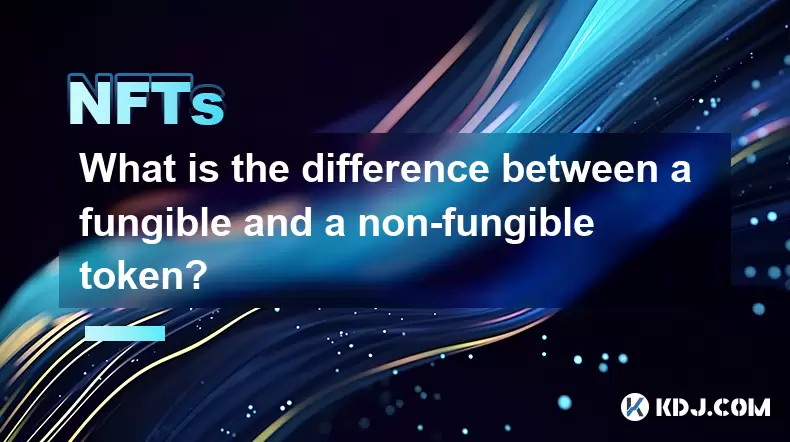
What is the difference between a fungible and a non-fungible token?
Aug 11,2025 at 12:07pm
Understanding Fungibility in Digital AssetsThe concept of fungibility is foundational to understanding both fungible and non-fungible tokens (NFTs) in...
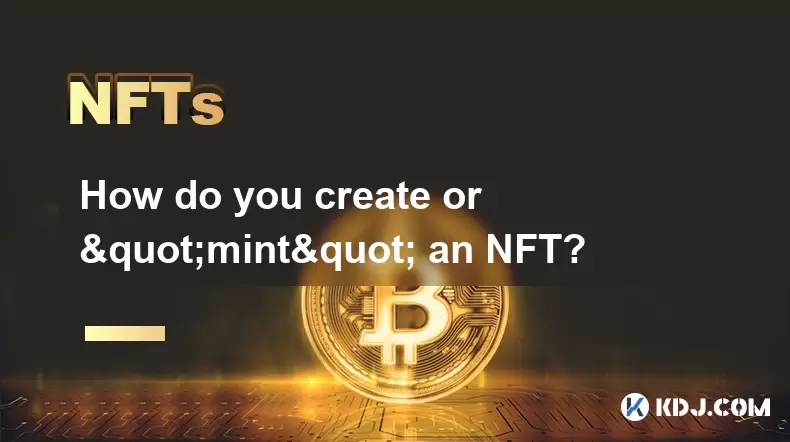
How do you create or "mint" an NFT?
Aug 09,2025 at 08:56pm
Understanding What an NFT Is Before MintingBefore diving into the process of creating an NFT, it's essential to understand what an NFT actually is. An...
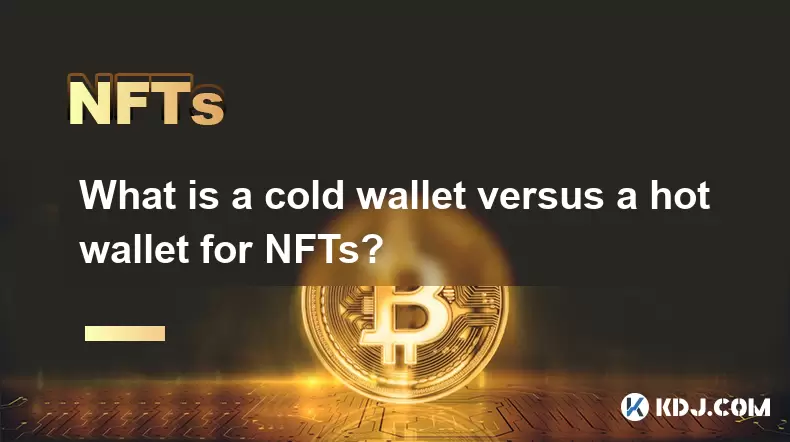
What is a cold wallet versus a hot wallet for NFTs?
Aug 10,2025 at 10:49pm
Understanding Cold Wallets and Hot Wallets in the NFT EcosystemIn the world of NFTs (Non-Fungible Tokens), digital ownership and security are paramoun...

Can NFTs be fractionalized?
Aug 11,2025 at 12:07am
Understanding NFT FractionalizationNFT fractionalization refers to the process of dividing a single non-fungible token into multiple smaller, fungible...
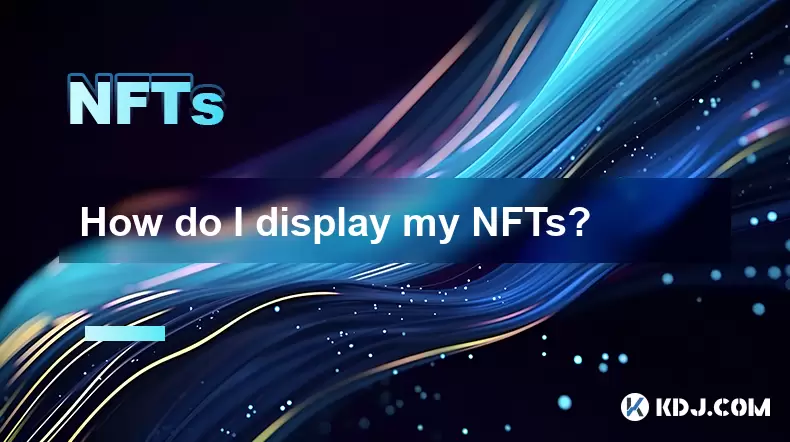
How do I display my NFTs?
Aug 09,2025 at 05:14pm
Choosing the Right Digital Wallet for NFT DisplayTo display your NFTs, the first essential step is selecting a compatible digital wallet that supports...
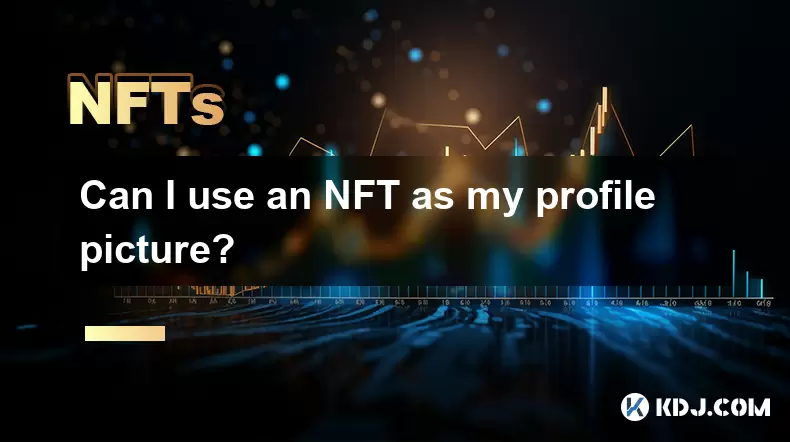
Can I use an NFT as my profile picture?
Aug 11,2025 at 12:01am
Understanding NFT Profile Pictures (PFPs)Yes, you can use an NFT as your profile picture, and this practice has become increasingly popular across soc...

What is the difference between a fungible and a non-fungible token?
Aug 11,2025 at 12:07pm
Understanding Fungibility in Digital AssetsThe concept of fungibility is foundational to understanding both fungible and non-fungible tokens (NFTs) in...

How do you create or "mint" an NFT?
Aug 09,2025 at 08:56pm
Understanding What an NFT Is Before MintingBefore diving into the process of creating an NFT, it's essential to understand what an NFT actually is. An...

What is a cold wallet versus a hot wallet for NFTs?
Aug 10,2025 at 10:49pm
Understanding Cold Wallets and Hot Wallets in the NFT EcosystemIn the world of NFTs (Non-Fungible Tokens), digital ownership and security are paramoun...

Can NFTs be fractionalized?
Aug 11,2025 at 12:07am
Understanding NFT FractionalizationNFT fractionalization refers to the process of dividing a single non-fungible token into multiple smaller, fungible...

How do I display my NFTs?
Aug 09,2025 at 05:14pm
Choosing the Right Digital Wallet for NFT DisplayTo display your NFTs, the first essential step is selecting a compatible digital wallet that supports...

Can I use an NFT as my profile picture?
Aug 11,2025 at 12:01am
Understanding NFT Profile Pictures (PFPs)Yes, you can use an NFT as your profile picture, and this practice has become increasingly popular across soc...
See all articles

























































































